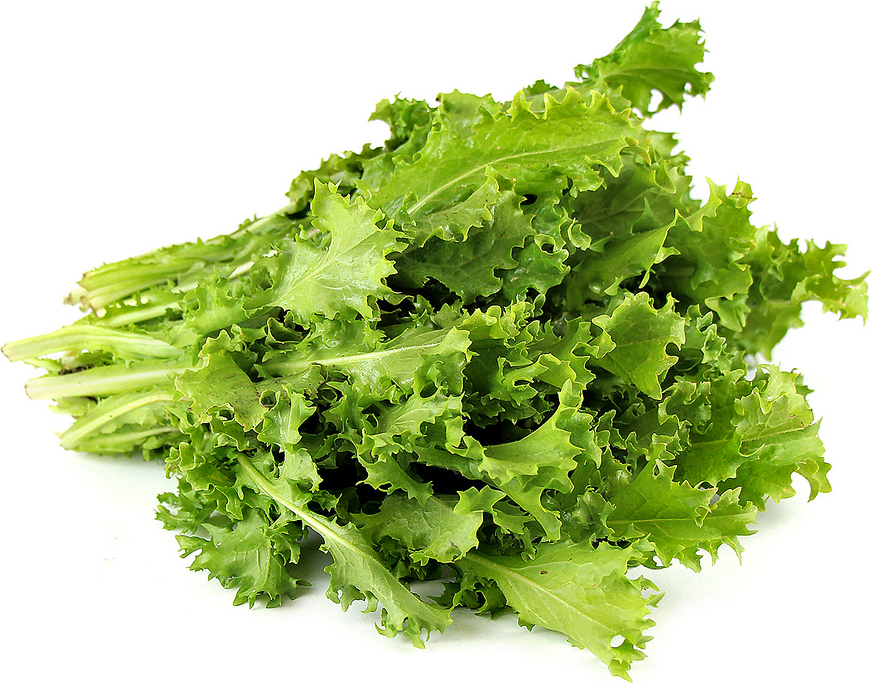


Romanesco Endive
Estimated Inventory, bunch : 0
Description/Taste
Romanesco endive has long, thin, serrated, slightly curled leaves that grow in a small upright bunch. The leaves are bright to dark green at their tips and fade to a light yellow or white color at the core of each bunch. The firm ribs that run the center length of each leaf are a white to pale green color. This Italian variety boasts the classic earthy bitterness and texture endives are known for. Though not a forced variety, Romanesco endive is sometimes "blanched" while it is still growing by tying the tops of the heads together to inhibit light from reaching the center leaves, a process that ensures the inner core will remain white in color, less bitter in flavor and tenderer in texture.
Seasons/Availability
Romanesco endive is available year-round with a peak season in the winter and spring months.
Current Facts
Romanesco endive is botanically known as part of Chicorium endivia and is a member of the Cichorium genus. A “true” endive, Romanesco endive is a cutting or leaf type also known as Endive Riccia Romanesco da Taglio. Once leaves are cut from this variety it quickly sprouts up new growth, making it a preferred variety for harvesting baby greens or even for producing micro greens.
Nutritional Value
Romanesco endive contains vitamin K which has been shown to aid in blood clotting and vitamin A which helps reduce the risk of osteoporosis. It also contains vitamin C, potassium, folate, calcium, iron, phosphorous and dietary fiber with the green portions of the endive containing more nutrients than the white portion.
Applications
Romanesco endive can be used in both raw and cooked applications. When raw and chopped it can be combined with other greens to create an appealing texture and flavor element in green salads. It can be braised, sautéed or added to soups. When raw the leaves are hearty enough to stand up to cream based or warmed dressings. It is also a good green for providing a salad bed for grilled seafood and meat. Its flavor and texture pair well with complimentary ingredients such as tomato, basil, pear, figs, lemon, toasted nuts such as pecans and hazelnuts, butter, mustard, white beans, pancetta, anchovies, and robust cheese such as pecorino, blue and manchengo. To store keep wrapped in plastic and refrigerated and use ideally within a weeks’ time.
Ethnic/Cultural Info
Cultivated endives are believed to have first made their way to Rome via Egypt around the same time as Cleopatra's exile in Rome with her son Cesarion. The bitter flavor profile of endives such as Romanesco endive have long been popular in Italian cuisine and are the focal point of many Italian dishes such as minestra maritata and straciatella soup.
Geography/History
True endives are believed to have originated in the Mediterranean basin. Romanesco endive specifically was first grown in Rome, Italy. A fairly easy to grow variety, Romanesco endive has a long sowing season and will even grow year-round in cooler regions. In Europe endive is produced commercially predominantly in France, more commonly though this unique variety is grown at small farms and in home gardens in Italy, the Netherlands, France and the United States.




